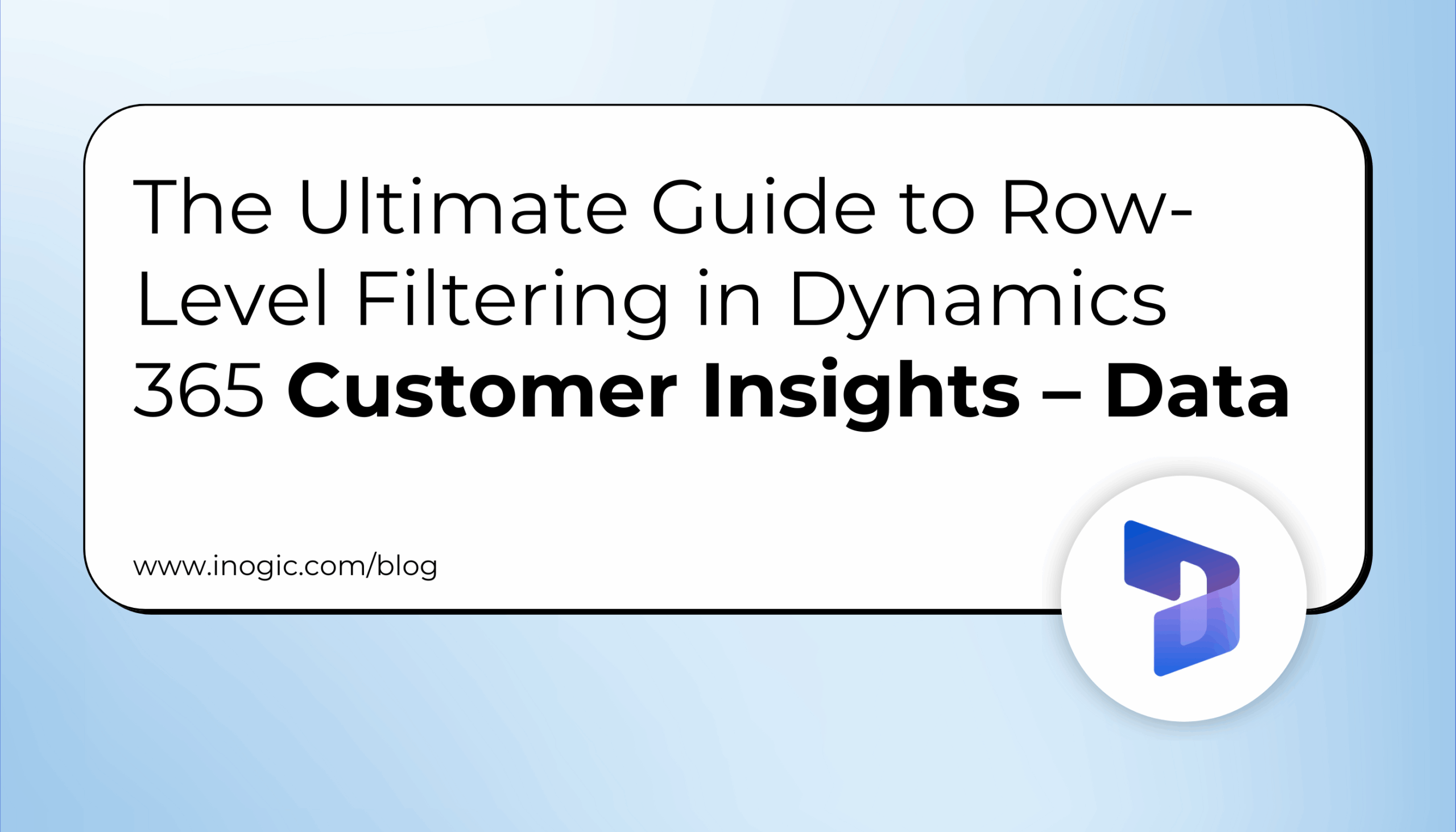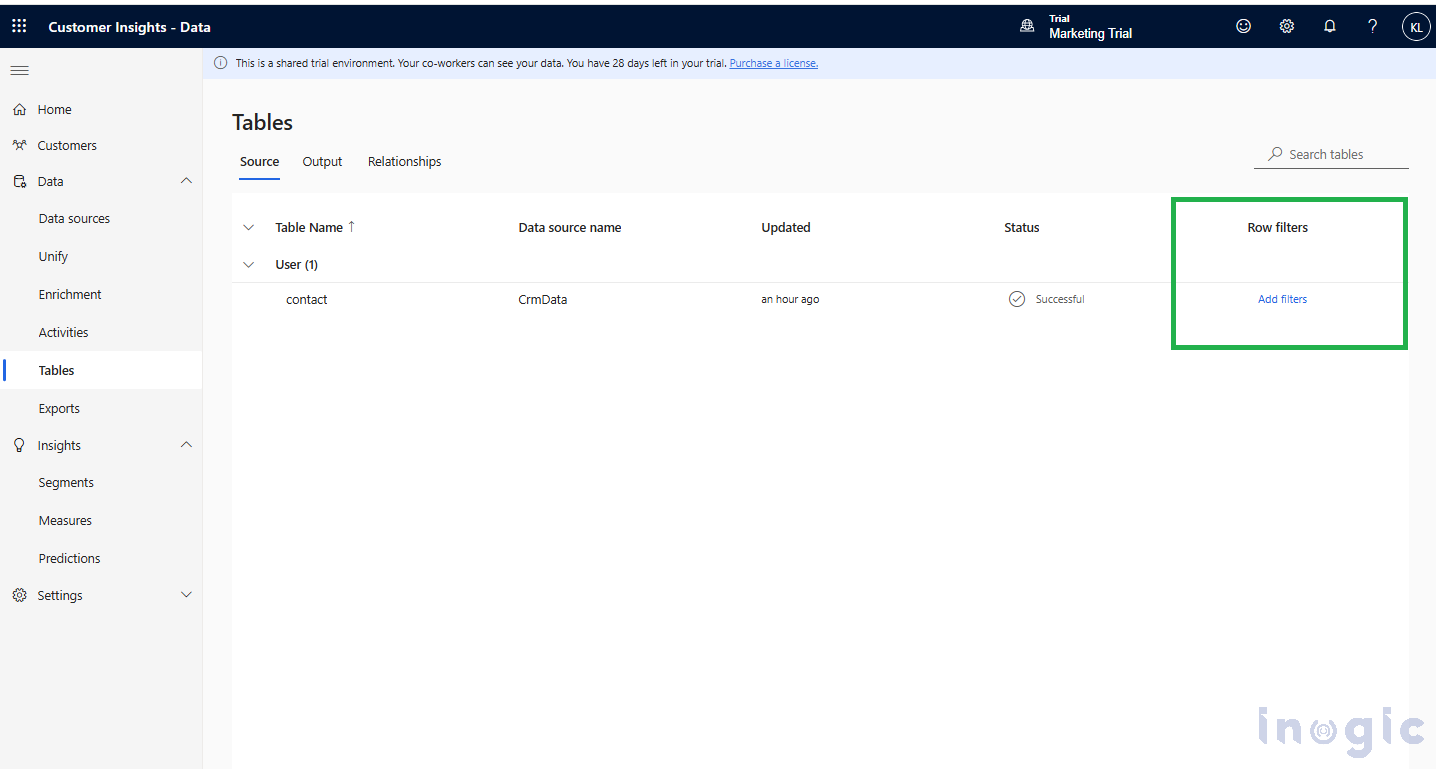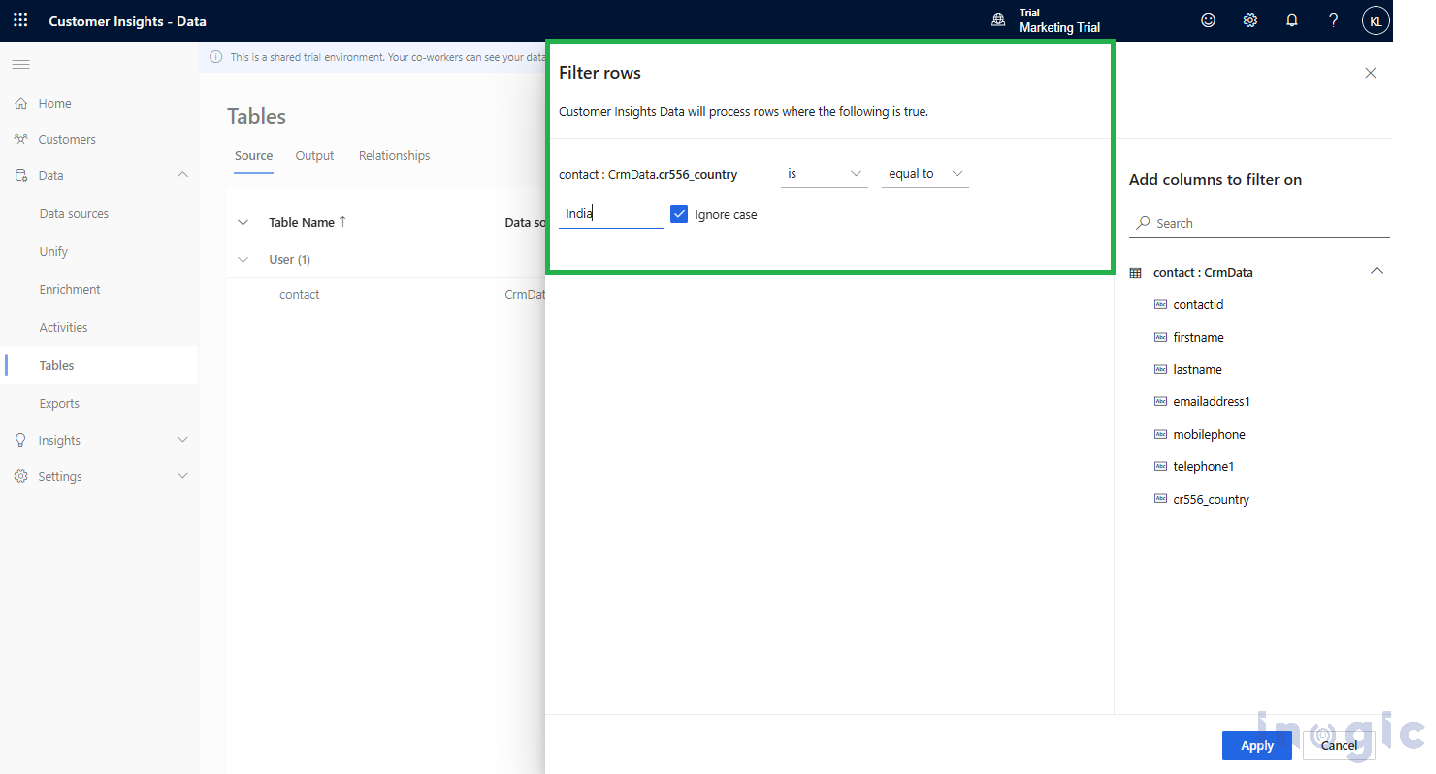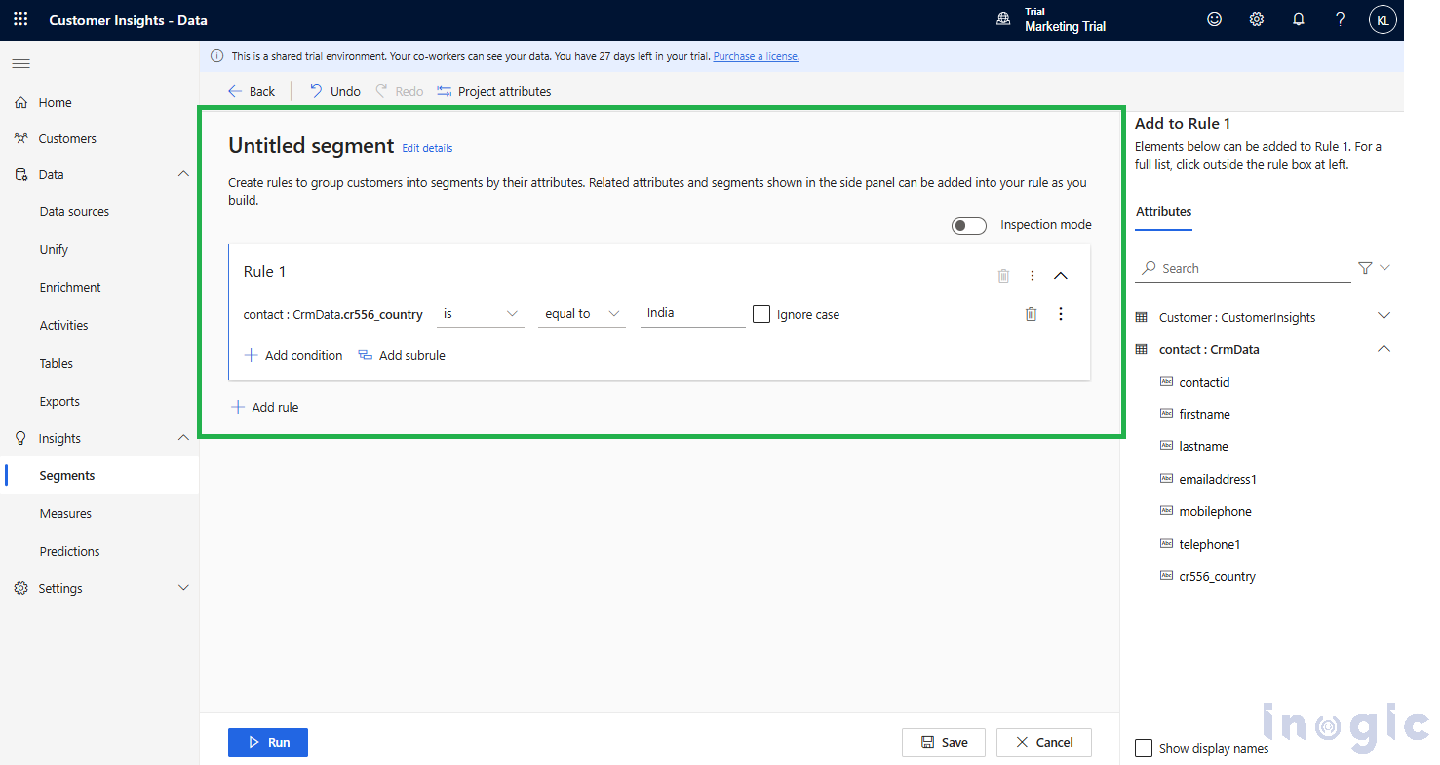Working with massive datasets in Microsoft Dynamics 365 Customer Insights-Data can be challenging. If you’re dealing with millions of records from different data sources, managing and filtering out unwanted data to enhance system performance is key.
Loading unnecessary data can create bottlenecks, slow down processing, and waste resources when creating segments, calculating measures, or building models. The result? Increased processing time and delays in generating valuable insights.
In this article, we’ll explore how you can filter data at the source to improve the efficiency and performance of your Dynamics 365 Customer Insights – Data, helping you save time and resources while delivering faster, more accurate insights.
Why You Need to Filter Data at the Source
When working with large datasets, time-consuming loading processes often lead to unwanted delays. Take, for example, one of our recent client projects. They were trying to create a segment to derive insights from a vast dataset, but the system was struggling to load all the data.
Here’s the issue:
- The system was loading the entire dataset, including irrelevant records, only to later filter out the data related to India (a small subset of the total data).
- Longer load times: The system took too much time to process all the data, even though the client only needed a fraction of it.
- Slower processing: Performance was further hindered during segment creation, model building, and measures calculation.
- Delayed insights: Since the system was processing unnecessary records, it was taking far too long to get the desired results.
The Solution: Row-Level Filtering at the Source
The 2025 Release Wave 2 of Microsoft Dynamics 365 Customer Insights – Data introduced a powerful feature: row-level filtering at the source. This new functionality allows you to filter out unwanted data before it enters the processing stage, optimizing your system’s workload and dramatically reducing processing time.
Here’s how this feature works for you:
Key Benefits of Row-Level Filtering:
- Filter Early, Process Less: Instead of loading entire datasets, the system only loads data that meets your filtering criteria, saving you time and resources.
- Targeted Processing: You’ll be able to filter data based on your specific needs before any heavy processing starts, reducing both processing time and system load.
- Better Efficiency: With only relevant data loaded into models, segments, or measures, the system can perform faster and more efficiently, resulting in quicker insights.
How Row-Level Filtering Works in Dynamics 365
Row-level filtering is applied to source tables during the unification, segment creation, or model building process. Here’s how it improves performance:
- Filtering at the Source: The filter is applied directly at the source level. The system will only process and load rows that meet the filter criteria, skipping irrelevant data. This significantly reduces the volume of data flowing into the models or segments.
- No Data Deletion: Importantly, this feature doesn’t permanently delete any data. It simply optimizes data processing by temporarily skipping rows that aren’t necessary for your task.
Steps to add row filter in Customer Insights-Data:
- Navigate to Data → Tables, then select the high-volume source table you want to optimize.
- On the table details page, go to Row filter, set the condition (e.g., Country= India), and save to apply it for downstream processing.
- Once the row filter is applied, create your segment based on the filtered dataset. Only records that meet the filter criteria will be loaded, resulting in faster processing and reduced system load.
Real-World Impact: Faster, More Efficient Data Processing
By applying row-level filtering, our client saw a dramatic improvement in system performance. Instead of processing millions of rows, we were able to focus on only the high-value records that were relevant to their task. This reduced load times and processing delays, allowing them to generate insights more quickly and efficiently.
This approach also eliminated the need for post-load filtering, which could previously be time-consuming and resource-intensive. By automating this step, we were able to tell the system exactly which data to prioritize, streamlining the entire process.
Frequently Asked Questions:
1. What is Row-Level Filtering in Dynamics 365 Customer Insights?
Row-level filtering in Microsoft Dynamics 365 Customer Insights allows you to filter data directly at the source table level before it enters the processing phase. This means only the relevant data is loaded into your models, segments, or measures, improving processing time, performance, and resource usage.
2. Why is Row-Level Filtering Important for Large Datasets?
When dealing with large datasets, loading unnecessary data can create bottlenecks, slow down system performance, and waste processing resources. Row-level filtering optimizes this process by ensuring that only the data that meets specific criteria is loaded, reducing load times and improving overall efficiency.
3. Can I Use Row-Level Filtering for All Data Sources in Dynamics 365?
Yes, row-level filtering can be applied to high-volume source tables in Microsoft Dynamics 365 Customer Insights. It works across various data processes like unification, segment creation, and model building, helping you filter the data based on specific criteria (e.g., country, customer type, etc.).
4. Will Row-Level Filtering Delete Any Data?
No, row-level filtering doesn’t permanently delete any data. It simply skips irrelevant rows during the data processing stage, which means the unwanted data isn’t loaded or transformed. Your original dataset remains intact.
Wrapping Up
Dynamics 365 Customer Insights Data Row Filter is a quintessential feature for any organization working with high data volumes. Moving the filtering to the source processing layer bypasses the bottleneck of loading irrelevant data, resulting in quicker computation times, better resource utilization, and faster time-to-insights. Stop trying to load millions of unnecessary rows; start filtering at the source!



